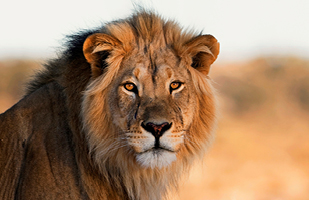A Look at Ohio’s Exotic Animal Laws

Visit the Supreme Court of Ohio Law Library to learn more about the state’s exotic animal laws.

Visit the Supreme Court of Ohio Law Library to learn more about the state’s exotic animal laws.
On the evening of Oct. 18, 2011, Muskingum County authorities began receiving calls from residents reporting sights of wild animals roaming their neighborhoods. The sheriff’s office would soon discover that a Zanesville homeowner freed about 50 exotic animals kept on his farm before he died by suicide. Authorities had to use lethal force against the aggressive, adult animals, which included several wolves, bears, Bengal tigers, and lions.
Only six animals survived the Zanesville animal escape, all of which were taken to the Columbus Zoo. The tragic incident caused state officials to amend Ohio’s animal ownership laws.
The Supreme Court of Ohio’s Law Library currently has a display about Ohio’s exotic animal law on view until early July. Come visit the library, located on the eleventh floor of the Thomas J. Moyer Judicial Center, to learn more about how the Zanesville event shaped Ohio’s current laws.
Prior to the 2011 escape, Ohio had few restrictions on exotic and wild animal ownership. Without restrictions, Terry Thompson was able to purchase a mass amount of wildlife.
After the incident, Gov. John Kasich responded swiftly with an executive order limiting auctions of animals not native to Ohio.
The following year, the Ohio General Assembly passed Senate Bill 310, which officially banned the selling, trading, and ownership of exotic animals by private citizens. Zoos, research facilities, circuses, and shelters still maintained the right to own dangerous wild animals.
The 2012 law, still in place today, also restricts inhumane treatment of wild animals, including bans on removing microchips and claws, as well as knowingly releasing animals or allowing them to leave the property where they are housed. The wild animals included in the law include lions, tigers, cheetahs, elephants, and several types of primates.
Exotic and wild animal restrictions in Ohio have not been uncontested, however. The U.S. District Court for the Southern District of Ohio heard a case from several citizens in 2012 alleging the Ohio law violated their rights under the First, Fifth, and Fourteenth Amendments to the U.S. Constitution. The judge denied their claims and upheld the restrictions on wild animal ownership.
Legal Disclaimer:
EIN Presswire provides this news content "as is" without warranty of any kind. We do not accept any responsibility or liability for the accuracy, content, images, videos, licenses, completeness, legality, or reliability of the information contained in this article. If you have any complaints or copyright issues related to this article, kindly contact the author above.
